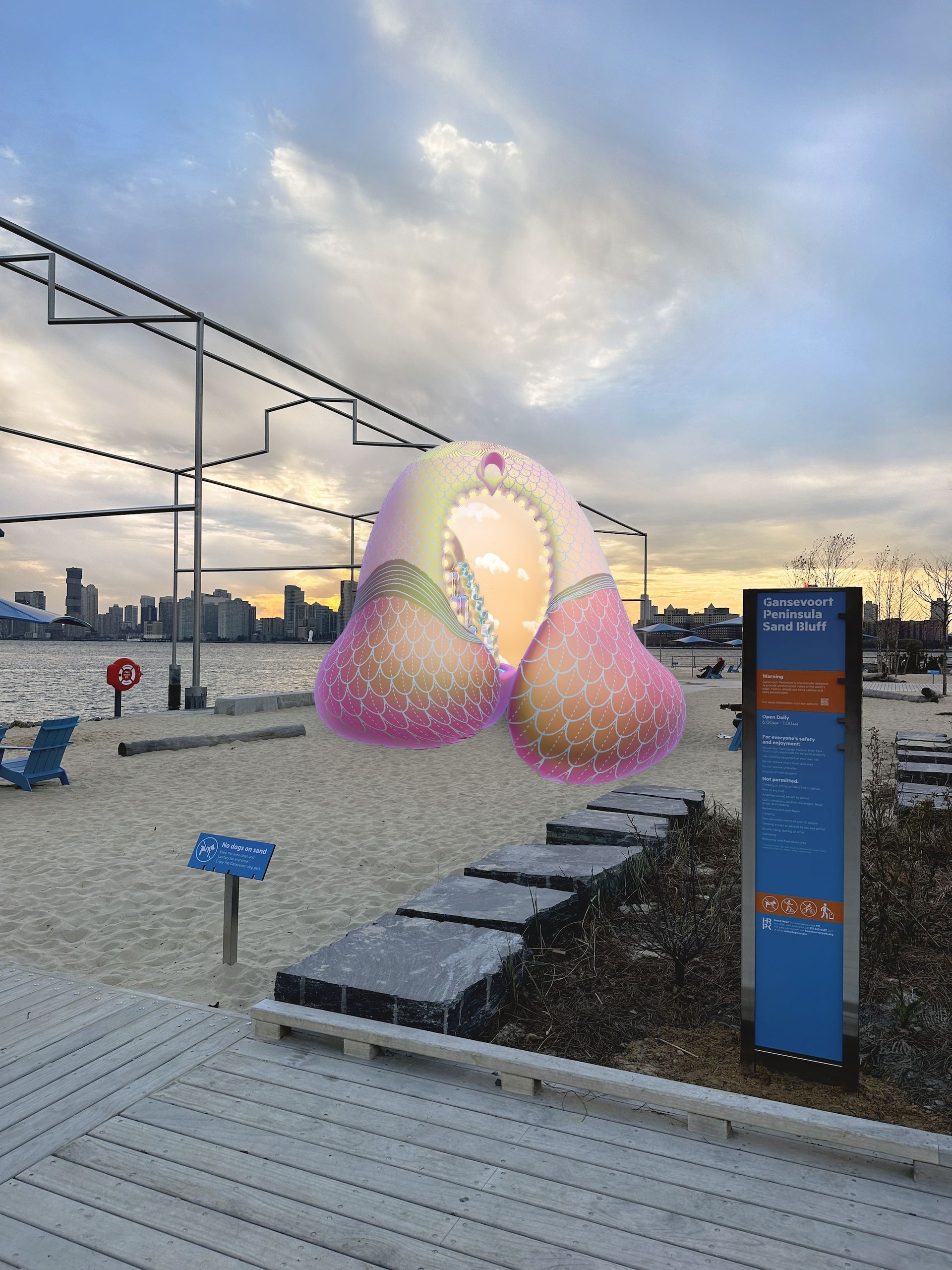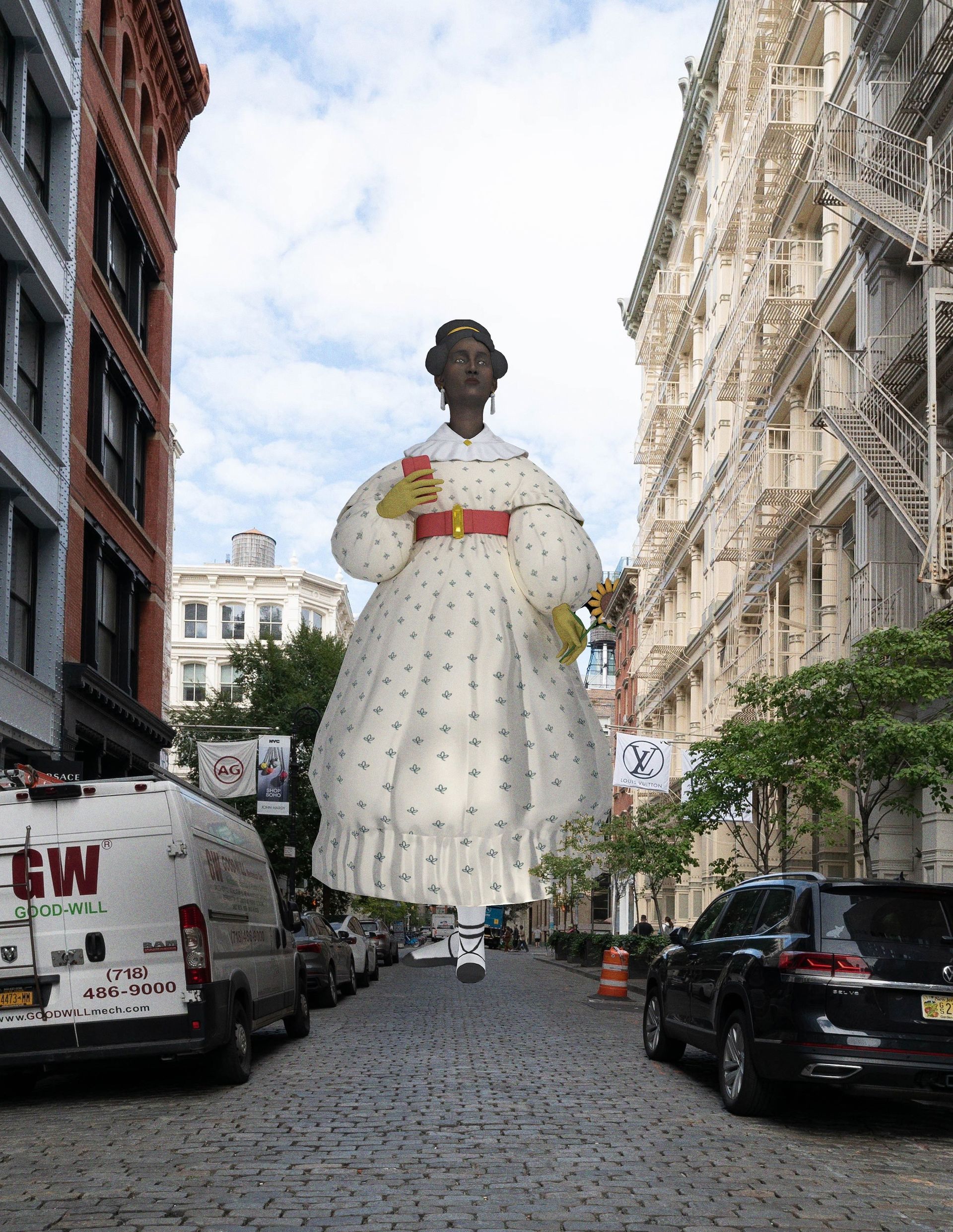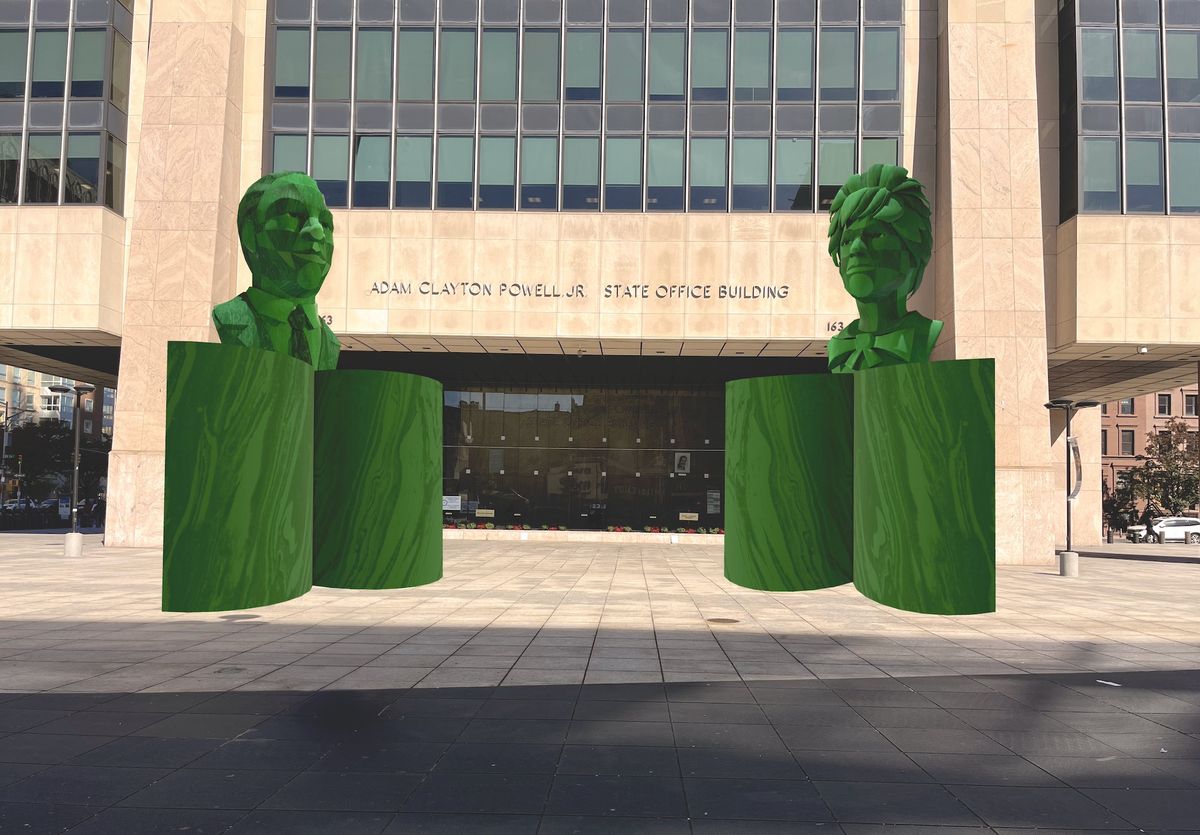Digital art platform Kinfolk has launched its New York City-wide participatory exhibition Signature Series, the initiative’s largest public endeavour to date. The project places newly created augmented reality (AR) monuments by four New York artists—Pamela Council, Derrick Adams, Tourmaline and Hank Willis Thomas—into designated public spaces across the city.
The technology, which has been developed by the company behind Pokémon Go, Niantic Lightship, allows users to view digital monuments at specific sites through the Kinfolk application. Adams’s Alma Green (Open Book) and Victor Hugo Green (Open Book) busts—tributes to the creators of The Negro Motorist Green Book that directed Black travellers toward non-racist businesses from the 1930s to the 60s—are visible at the Adam Clayton Powell State Office Building’s plaza in Harlem. A new, digital iteration of Council’s Fountains for Black Joy, A Fountain for Survivors—whose original, physical version was installed in Times Square in 2021—is available to view at the Gansevoort Peninsula, in close proximity to David Hammons’s permanent sculpture Day’s End (2014-21).

Pamela Council's digital Fountain for Survivors (2023) Courtesy the artist and Kinfolk
Idris Brewster, Glenn Cantave and Micah Milner co-founded Kinfolk in 2017 amid debates around the potential removal of the Christopher Columbus monument in Manhattan’s Columbus Circle. At the time, Brewster was working for Google and teaching art through computer science to students of colour. Those experiences prompted him to explore the overlap of AR, activism and public art.
“I wanted to highlight new histories and new communities in public spaces through 3D technology while showcasing the true story of Columbus,” he tells The Art Newspaper. “History is preserved very archaically,” he adds, “and even so, archiving is very central and does not engage with most communities.” Kinfolk’s founders were driven by the possibility to erect monuments without approval from any municipality or institution, as well as “exposing the youth to the power of creating technology”. A grant from art and technology non-profit Eyebeam and a residency at the New Museum’s New Inc incubator provided the initial push and a larger network of artists and collaborators.
In early 2023, the Museum of Modern Art’s group exhibition Architecture Now: New York, New Publics included Kinfolk’s The Monuments Project, another app-based initiative that showcases monumental sculptures of historical Black figures across the city, including General Toussaint Louverture at the Columbus Circle.

Tourmaline, Alien Superstar, 2023 Courtesy the artist and Kinfolk
Having transformed his art into various tangible media such as floats and playgrounds, Adams sees the partnership with Kinfolk as “an opportunity to connect with a bigger audience through the accessibility of the digital format”. Being located at a socially active site elevates this engagement, he says, “especially when most businesses and buildings listed on Green Book are unfortunately gone”. His monuments to the books’ creators “stand as reflections of an archive of a particular time”.
For Council, regardless of the medium of her fountain sculpture, “making sure Black voices and stories can be heard publicly is the main goal”. She had built her Times Square sculpture with 400,000 acrylic nails, and conveying the same effect digitally presented significant challenges. Instead of “mimicking the nails themselves”, the Kinfolk team helped Council digitally built the mosaic framework she had used in the physical sculpture. “The nails were so dazzling that this structure wasn’t easy to see in person,” she adds, “so this iteration has given me chance to exhibit the framework and mathematical underpinnings of my design and adds a new legacy to the series.”
A two-year, $1.8m grant from the Mellon Foundation in 2021 allowed Kinfolk “to think bigger”, Brewster says, “and realise the potential of the medium across other cities”. The organisation plans to expand the Signature Series of AR monuments to five other US cities, including New Orleans, in the coming months.


